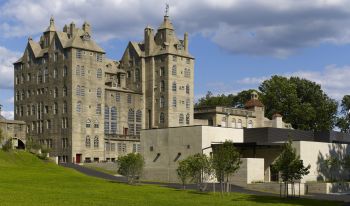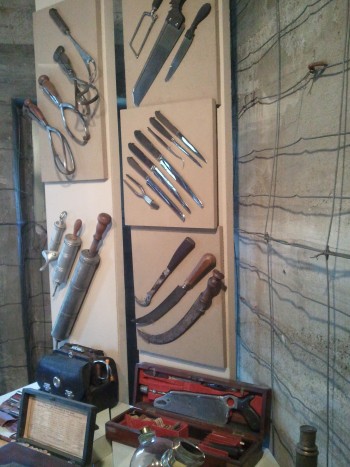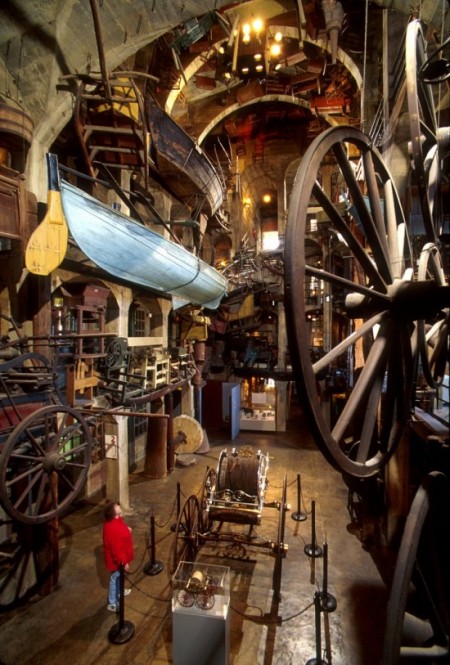 There are hundreds of stones left in the pile and summer is here, the light stays longer, and I can work in shorts and shirtsleeves; the energy I have must be burned and all those stones are ready, but I build to make something that is merely a pattern upon the landscape of the yard — unlike real craftsmen and women and unlike the farmers and their wives from the pre-electric age. They made objects that were practical and beautiful and ingenious. They even made the tools they used to make their machines. They set their muscles and minds against matter and gravity and built wonderful things.
There are hundreds of stones left in the pile and summer is here, the light stays longer, and I can work in shorts and shirtsleeves; the energy I have must be burned and all those stones are ready, but I build to make something that is merely a pattern upon the landscape of the yard — unlike real craftsmen and women and unlike the farmers and their wives from the pre-electric age. They made objects that were practical and beautiful and ingenious. They even made the tools they used to make their machines. They set their muscles and minds against matter and gravity and built wonderful things.
The Mercer Museum in Doylestown, a six story reinforced concrete fire-proof castle, an astonishing building really, looks as if it belongs in some punked out version of Dracula. It contains the collections of Henry Mercer who believed that the tools and the objects that 18th and 19th century ordinary Americans used every day were the best gauges of their daily lives.
Iron stoves, hundreds of them, ornately decorated, hang from the walls of a cranny on the top floor — one, a column stove, was fashioned to look like a cathedral. Stepping out of that room one sees cider mills, enormous presses used to crush apples (the dominant fruit in the diet of rural Americans) and make hard cider. The wooden beams used in its structure have a radius of 18 inches; a horse was hitched to the winding shaft and as it walked, the press descended. The attic contains a gallows, the scaffold itself, a courtroom docket for the accused studded with spikes — and assortments of chains, shackles and the Pear, an expandable iron device used against prisoners, an instrument of torture. Mercer collected everything made by the hands of men.
We saw broom making machines and broom corn machines which pulled seed corn from the cob to use to feed fowl. We saw tools to make turpentine which gave way to pine tar, an essential material for the rigging and sealing of wooden ships-of-war and merchant vessels, and then a whaleboat, complete with harpoons and killing lance, and a Maine dory and a sleigh, carriage, stage coach, road cart, buggy and Conestoga wagon which could carry eight tons of freight. One room is filled with blacksmithing gear by the hundred weight, another with musical instruments – banjos, dulcimers, zithers, auto-harps and music boxes and everything necessary to make them. Baskets, cradles and chairs hang from the ceiling in the main gallery. Mercer wrote that “a tremendous murmur comes out of these things,” and that they contain in their well-worn handles and grips, the voices “of ages and ages” of human beings. He was in love with them and with the story behind each piece – he wanted their histories: who made them, when, how were they passed along, where were they discovered and saved from the scrap heap?
If you put in the time and could find a patient teacher, all the materials are here that would help you become a brick maker, stone cutter, wood worker, butcher, trapper, baker, wheelwright, hat maker, cobbler, cooper, leatherworker, glass blower, clock and watch maker. You prefer to work in the fields – find the scythes of every size, corn knives, husking pegs, hay rakes, hooks and forks. Six floors packed with how we grappled with the physical world when horse, muscle and water power were all we could wield.
 There are moments when one feels overcome by the skills needed to use these tools, many of those skills now lost. There are moments when one feels an attachment to a more rugged, elemental world, one moored by wood and stone, a quieter place.
There are moments when one feels overcome by the skills needed to use these tools, many of those skills now lost. There are moments when one feels an attachment to a more rugged, elemental world, one moored by wood and stone, a quieter place.
Then you come to the room of doctor’s and surgeon’s tools, the bone saws, tooth pullers, fearsome knives and syringes and lances used to open a vein to bleed the dark humours from a patient.
Then you think of how challenged lives would be lived in rural isolation where one must be dependent upon a family’s own physical well-being just to survive – that’s it — survive, not flourish. Lincoln, who grew up in this kind of life, who as a child and young man, used his back to make his way, summarized his youth in one line taken from a poem: “The short and simple annals of the poor.”
Robert Caro, in the first book of his biography of Lyndon Johnson, spent time in the Hill Country of Texas, Johnson’s birth place, and learned first-hand what life without electricity was like:
“Because there was no electricity, there were no electric pumps, and water had to be hauled up–in most cases by the women on the farms and the ranches, because not only the men but the children, as soon as they were old enough to work, had to be out in the fields. The wells in the Hill Country were very deep because of the water table–in many places they had to be about seventy-five feet deep. And every bucket of water had to be hauled up from those deep wells. The Department of Agriculture tells us that the average farm family uses two hundred gallons of water a day. That’s seventy-three thousand gallons, or three hundred tons, a year. And it all had to be lifted by these women, one bucket at a time.
I didn’t know what this meant. They had to show me. Those women would say to me, “You’re a city boy. You don’t know how heavy a bucket of water is, do you?” So they would get out their old buckets, and they’d go out to the no-longer-used wells and wrestle off the heavy covers that were always on them to keep out the rats and squirrels, and they’d lower a bucket and fill it with water. Then they’d say, “Now feel how heavy it is.” I would haul it up, and it was heavy. And they’d say, “It was too heavy for me. After a few buckets I couldn’t lift the rest with my arms anymore.” They’d show me how they had lifted each bucket of water. They would lean into the rope and throw the whole weight of their bodies into it every time, leaning so far that they were almost horizontal to the ground. And then they’d say, “Do you know how I carried the water?” They would bring out the yokes, which were like cattle yokes, so that they could carry one of the heavy buckets on each side.
Sometimes these women told me something that was so sad I never forgot it. I heard it many times, but I’ll never forget the first woman who said it to me. She was a very old woman who lived on a very remote and isolated ranch–I had to drive hours just to get out there–up in the Hill Country near Burnet. She said, “Do you see how round-shouldered I am?” Well, indeed, I had noticed, without really seeing the significance, that many of these women, who were in their sixties or seventies, were much more stooped and bent than women, even elderly women, in New York. And she said: “I’m round-shouldered from hauling the water. I was round-shouldered like this well before my time, when I was still a young woman. My back got bent from hauling the water, and it got bent while I was still young.” Another woman said to me, “You know, I swore I would never be bent like my mother, and then I got married, and the first time I had to do the wash I knew I was going to look exactly like her by the time I was middle-aged.” *
I try to remember all this when living off the grid or simplifying to the point of the primitive becomes too romantic a vision of an alternative life.
Still, their skills were remarkable, their self-reliance admirable, their intelligent application of brute force inspired. Henry Mercer has tucked as much as he could salvage of this old life into his castle. It is filled with wonders.
*All of this is worth reading.

This museum was extremely interesting and I am so glad that I got to see it all with my siblings. It shows how the people who came before us had to work so hard for things we acquire so easily.